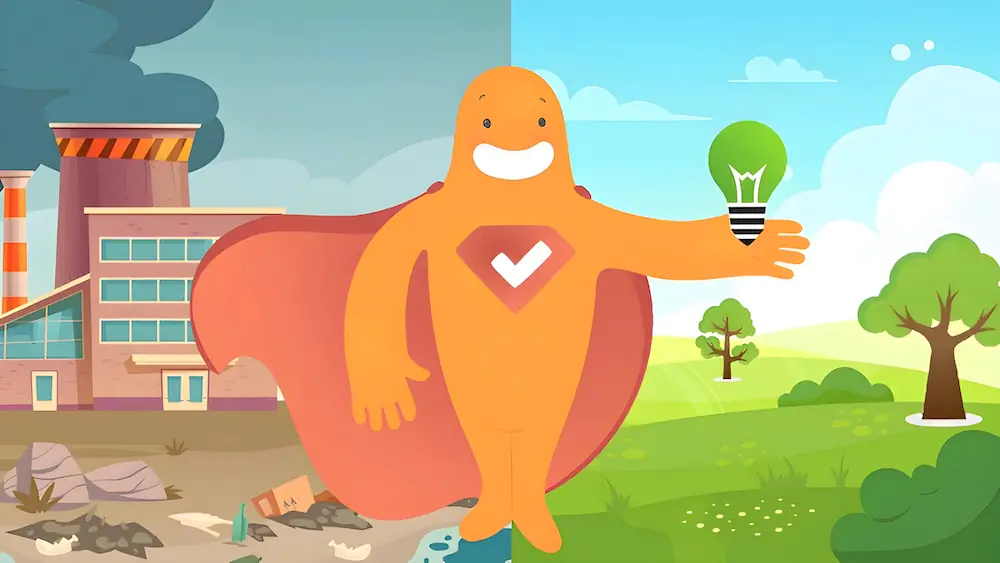Generation Z seems to elude a lot of marketers and researchers. For a while, this group was lumped in with Millennials, as they were all seen as young adults. However, this is no longer true. Some of the oldest Millennials have hit 40, with many having kids of their own (not to mention careers, cars, mortgages, and so on). So what makes Zoomers such a mystery – and how can they be reached for Gen Z polling?
Create your Gen Z survey, form, poll, or questionnaire now!
Who is Gen Z?
Generation Z, which finally acquired their official moniker “Zoomer” as a contrast to Boomers, were born between 1997 and 2012. So, while some are still in grade school, the oldest are in their 20s and are having a cultural impact today. As they age, their spending power grows, making them an important demographic for marketers. In fact, according to a recent Bloomberg report, young Gen Z students and professionals now command $360 billion in disposable income.
It’s important to realize that Zoomers grew up in a completely digital world. This means they embrace social media and other forms of online communication. They’re also more likely to use social media to contact others, including companies, versus emailing (the preference of older generations).
What Makes Gen Z Different
Although Gen Z grew up in a completely connected world, most of their parents belong to Generation X. So, like their parents, many Zoomers are skeptical of today’s leadership and major corporations. To get to them requires authenticity in messaging, not hard-selling tactics. They are also the most diverse generation in the United States so they cannot be pigeonholed. They have their own opinions on diversity and sexuality and one wrong word on social media can start a firestorm.
Another difference is that while Millennials came of age during the Great Recession and were concerned about the future, many Zoomers have come of age during the Great Resignation which throws traditional 9-5 jobs out the window. A recent Adobe survey of 5,500 workers found that more than 55% of those ages 18–24 say they are planning to switch jobs in the next year. Research from Microsoft and Bankrate backs this up, reporting that the majority of Zoomers are thinking about quitting their jobs and finding fulfillment elsewhere.
Ultimately, Gen Z or Zoomers are an entirely different generation from those that came before. This makes research and marketing surveys a little more complicated!
12 Considerations for Gen Z Surveys
In order to reach Zoomers, marketers and researchers need to think differently about their surveys. This generation is not likely to engage in mail-in surveys and telephone surveys!
1. Use Online Surveys
While previous generations may have been willing to give their time to more traditional survey methods, Gen Z is less likely to do so. To engage with them, it’s important to take things online. After all, studies show that the average Zoomer spends more than eight hours a day online! Read more about the 14 benefits of online surveys here.
2. Create Social Media Surveys
Social media is where many Zoomers spend their time online. Reaching them on sites like Twitter, Facebook, Instagram, and others is the best way to get their attention. Plus, social media surveys are easy to conduct and cost-effective. Read more about social media surveys here.
3. Embrace Pop-up Surveys
A pop-up survey is a feedback form that, as the name suggests, pops up on a website or app. Since that’s where Zoomers are, it makes sense to try to survey them this way! Pop-up surveys can be applied simply with a survey form placed in a modal – which is a window that displays in front of the main window. While the main window remains visible, it is temporarily disabled until a user interacts with the modal, either agreeing to leave feedback or closing out of it. Read more about pop-up surveys and their advantages.
4. Send Microsurveys
Because of the abundance of technology and media at their fingertips, Zoomers have a limited attention span, estimated to be just 8 seconds. So, you have to reach them and keep them engaged. A lengthy survey won’t do that, and they’ll be more likely to drop out. Microsurveys, which typically consist of just 10 or 12 questions, are much more likely to keep Zoomers engaged and provide the feedback you need. If you need to gather a lot of data, sending multiple microsurveys – versus one long one – may also be to your advantage. Read more about microsurveys.
5. Use Instant Incentives
Incentives come at a cost, but they can be a big motivator for Zoomers. This generation was born in the age of “instant gratitude” with everything just a tap away. So, make your survey easily accessible and consider offering an instant reward, such as a coupon code at the end of the survey. Mailing a gift card that they have to wait for will not be a motivator. Read more about the pros of incentives (and a few of their cons).
6. Be Careful with Gen Z Survey Questions
As mentioned previously, Zoomers are the most diverse generation ever. So, be careful how you word your questions. This generation can become easily offended if they think you’re dismissive of a particular group or non-inclusive with your answers. Keep this in mind when developing questions, especially demographic questions. You can also read more in our blog about asking sensitive questions.
7. Be Forthcoming with Your Survey Goals
Once again, Zoomers – like their parents – can be skeptical of intentions. To engage them, be sure to be forthcoming with why you are surveying them and how their data will be used. This can be accomplished through a quick disclaimer. You can also offer anonymity or confidentiality.
8. Use Survey Images
The platforms this generation engages with are highly visual. Zoomers prefer photos to words-only. So, you want to make visual surveys. Using pictures in Gen Z polls or images in surveys is sure to gain more attention than text-only surveys. Read more about how easy it is to create great visual surveys and polls with pictures using SurveyLegend and the seven benefits of picture surveys. Below is an example of one of our surveys with images.
9. Continue to Engage
Gen Z likes to have their voice heard, but responding to surveys without providing feedback can leave them cold. Make sure to thank them for their time, and if they’ve left any negative responses about your company in the survey, be sure to address them in a follow-up email, text, or post. Communication is key with Gen Z.
10. Use Responsive Survey Design
Gen Z spends more than 4 hours per day on mobile and 95% of them own a smartphone. So, you need to be sure your survey adapts to their devices, even when you design it on a desktop. If your survey is not properly formatted for various devices, it will render poorly on some screens, with images and words being cut off. One of the easiest ways to boost survey response rates with Gen Z is to make sure your survey is responsive (i.e. mobile-friendly).
11. Try Kiosk Surveys
If you’re not getting survey responses from Gen Z through online and social media surveys, consider kiosk surveys. A kiosk survey is a touchscreen display device placed in various outlets that ask for feedback, often at the point of purchase. These can reach Zoomers where they’re at – stores, restaurants, etc. Plus, they’re unintrusive (giving the user the option to engage or not) so they’re non-threatening.
12. Leverage Your Promoters
Last but not least, leverage your promoters! When you’ve found a Zoomer who is talking up your product or service, and they have a lot of followers, stay engaged with them. After all, good word-of-mouth marketing drives $6 trillion of annual consumer spending and is estimated to account for 13% of consumer sales. You might even consider an affiliate program. With an affiliate program, your supporters actively market your product or service, and they receive financial rewards when someone they refer to becomes a customer. It’s a win-win for you and them!
Conclusion
Generation Z is unlike any generation that came before. They are digital natives and they have many unique ideas based on the era they’ve grown up in. To reach these Zoomers, brands and marketers have to take a different approach than before. With SurveyLegend, you can do that through our one-of-a-kind surveys. Our online surveys with pictures render beautifully on any device, and they’re easy to create and use on multiple platforms. They’ll make an impression on Gen Z consumers, and you can get started today!
Do you regularly reach out to Gen Z? What has worked for you, and what have you learned? We’d love to hear from you in the comments.
Create your free Gen Z survey, form, poll, or questionnaire now!
Frequently Asked Questions (FAQs)
Generation Z is defined as the 72 million people born between 1997 and 2012. Some studies define the generation as anyone born after 1996.
Generation Z, or “Zoomers,” are digital natives, never knowing life before the internet. As such, they are technically savvy and spend a lot of time online. They are also the most diverse generation in history.
The best way to reach Zoomers is through online surveys (these can be designed through email, social media, kiosk surveys, and more).




